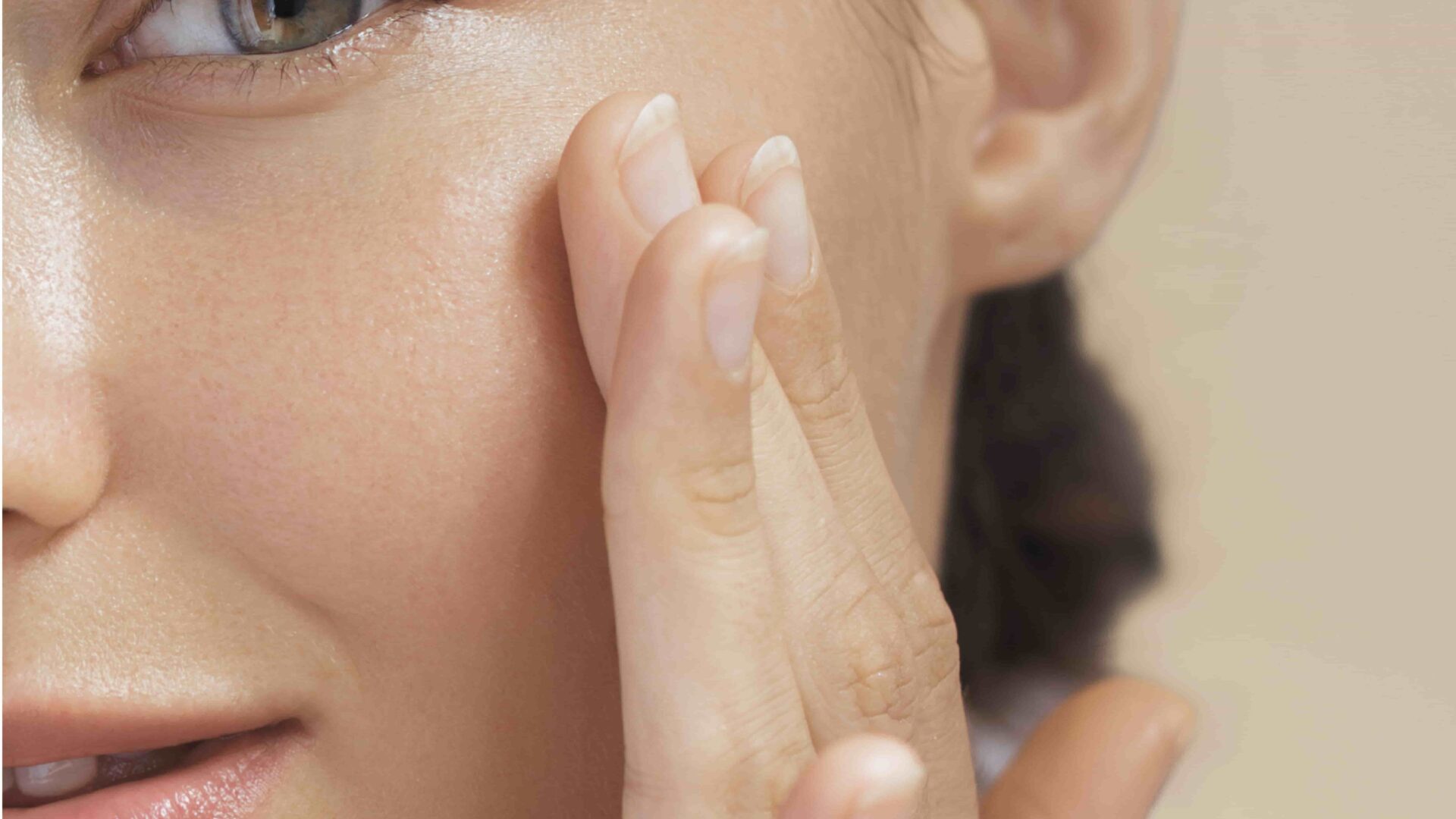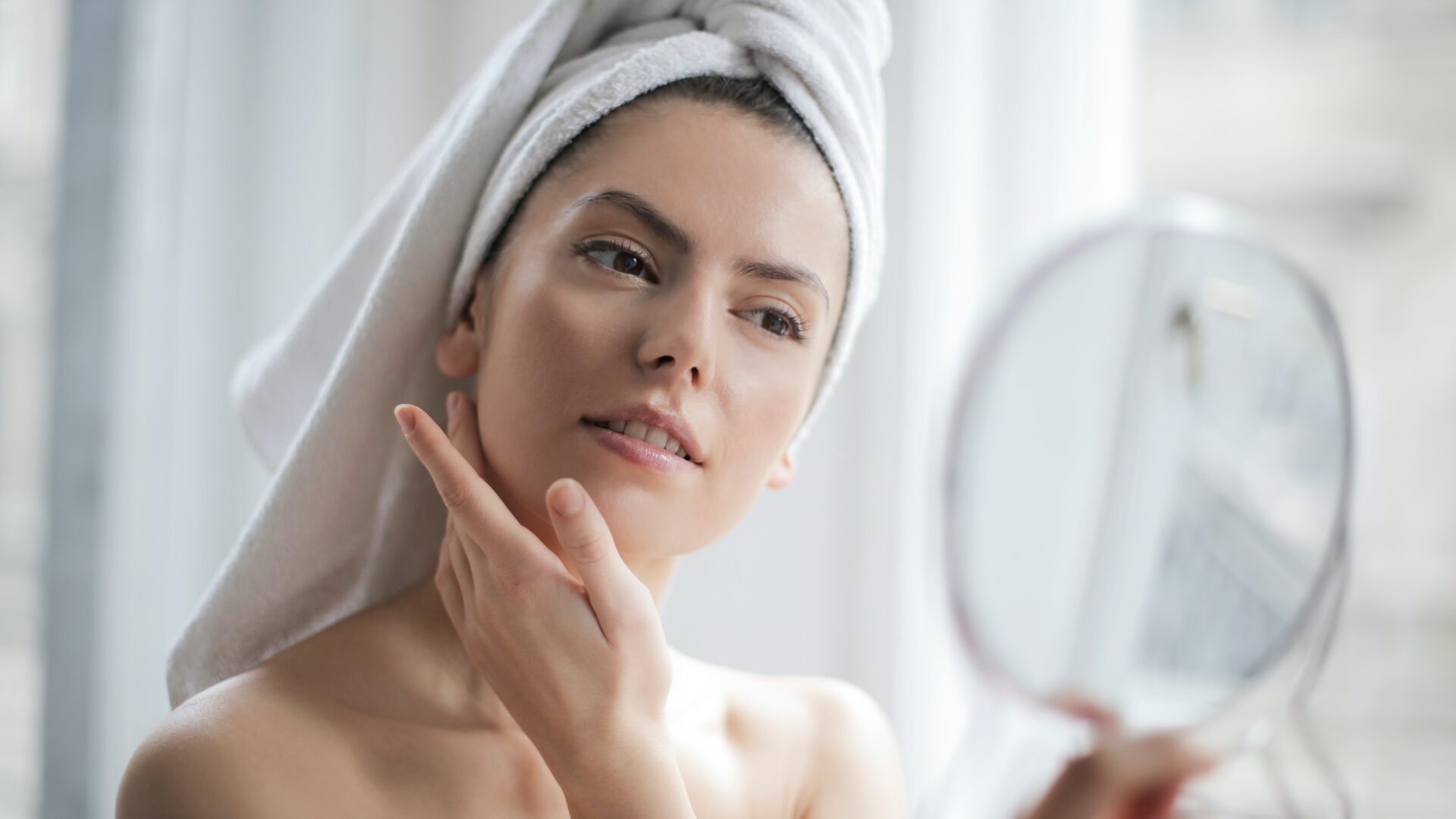AHA stands for Alpha Hydroxy Acid, one of the hydroxycarboxylic acids found in various skin care products. For decades, AHA has been used as the gold standard in anti-ageing and pigmentation spot treatments. In this article, we take a closer look at the effects of AHA, what it does for the skin and what types of AHAs there are. We also examine the differences from BHA to utilize each acid effectively.
What is AHA?
AHAs are water-soluble hydroxycarboxylic acids, whereas BHAs are fat-soluble. This is the main difference between the hydroxycarboxylic acids, whereby both AHAs and BHAs can penetrate the skin’s surface and loosen more dead skin cells from the stratum corneum than physical exfoliants, such as peeling beads. They can improve the appearance of skin, which is dull or hyperpigmented due to sun damage or other skin debris, resurface dry skin and even reduce the appearance of wrinkles and smooth out the skin’s texture. AHAs and BHAs can stimulate cell renewal, although it is currently unclear why. This can lead to plumper skin with better texture.
There are also PHAs, the new generation of AHAs, which work in the same way, but are less irritating to the skin.
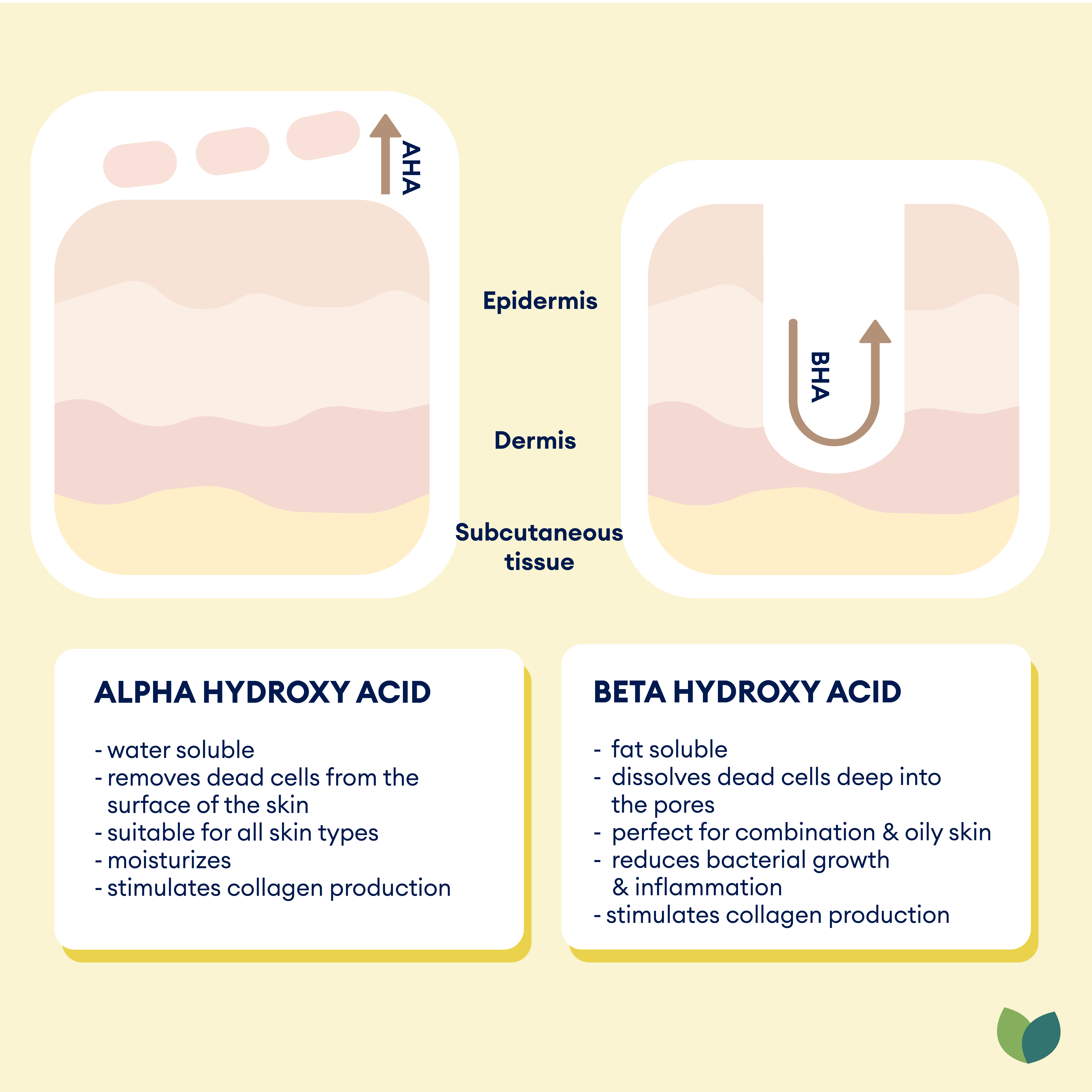
Different uses of AHA and BHA
The best AHAs for penetration are glycolic and lactic acids – because they are small, they can penetrate the skin surface better. AHAs are, contrary to expectations, humectants and can help to moisturize the skin. However, because it is oil-soluble, salicylic acid (BHA) can also penetrate pores that are clogged by oily cells and sebum.
This means that AHAs are the better choice for dry skin, whilst BHAs work better for clogged pores.
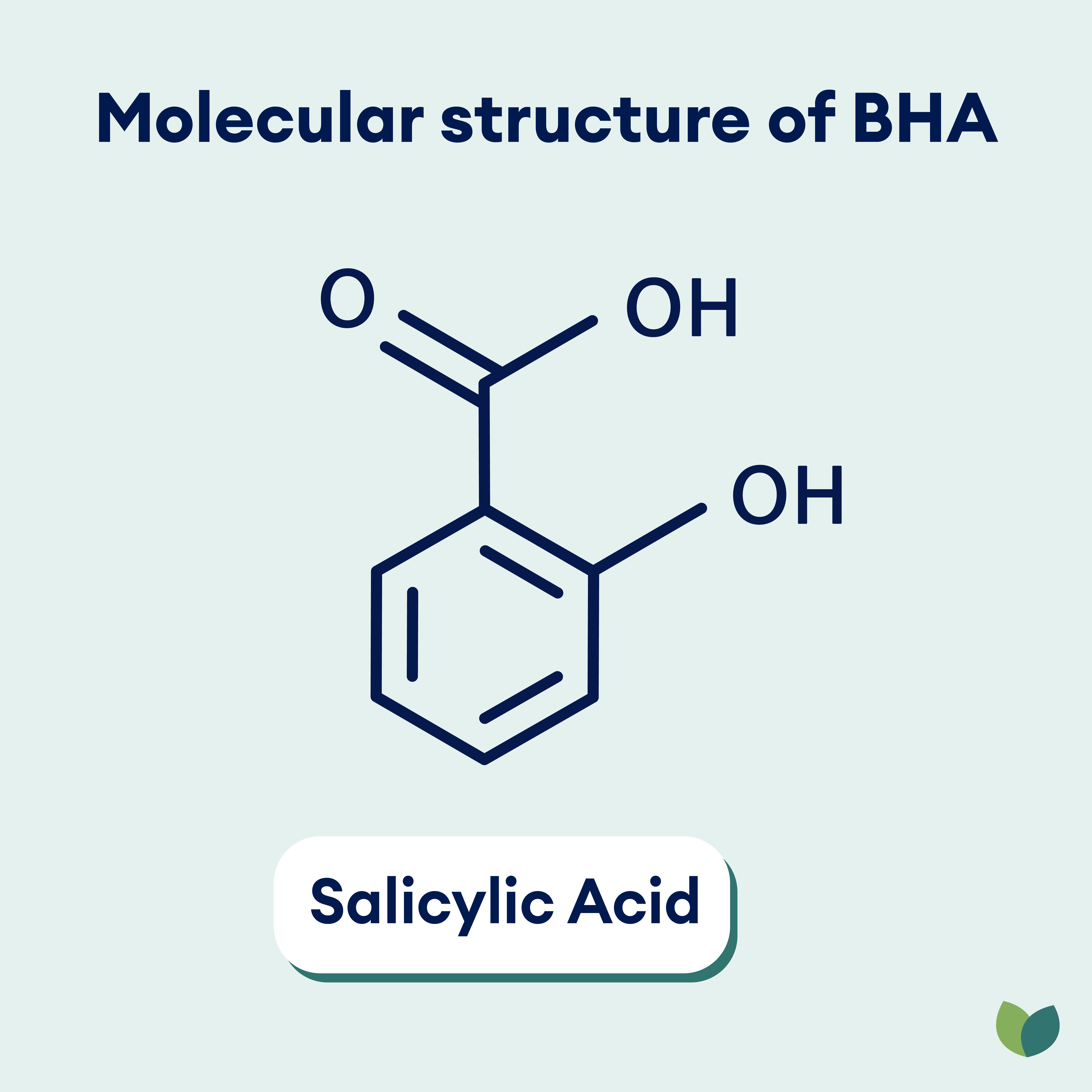
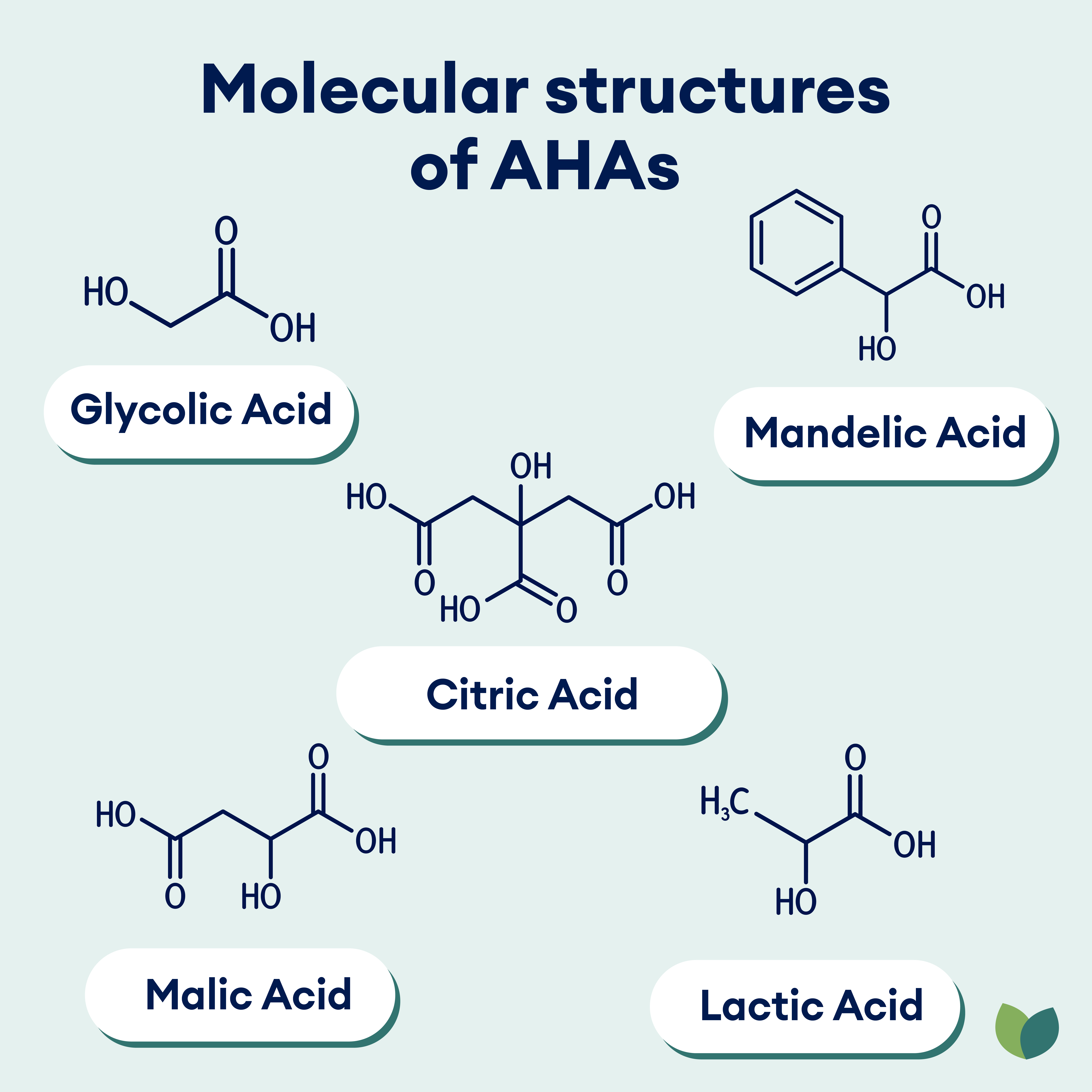
Types of AHAs
Glycolic acid: The classic par excellence. With its small molecular structure, it goes deeper into the skin than other AHAs, stimulating collagen production. It is the most effective acid, but this also means that glycolic acid can cause the most irritation.
Lactic acid: Ideal if you do not tolerate glycolic acid particularly well. The molecular structure is larger and therefore this AHA does not penetrate too deeply into the skin. Hydrates the skin particularly well. Lactic acid is therefore a good choice for people with sensitive skin.
Mandelic acid is mild, akin to lactic acid, and is an excellent moisturizer for the skin. Additionally, it is unique in that it possesses antibacterial properties.
Malic acid: Is known for its skin lightening effect. As the molecule size is larger than that of lactic acid, it’s also gentler on the skin. Malic acid occurs naturally in apples.
Citric acid: Citric acid, the mildest and least acidic of the AHAs referenced, is naturally present in citrus fruits like oranges, lemons, limes, and grapefruits. It also functions as an antioxidant, safeguarding the skin from ageing and environmental damage.
How often to use AHAs
Y In general, it is best to apply once or twice a week and gradually increase the application depending on skin tolerance. Peptides can slow down the penetration of AHAs, making them less irritating.
Start slowly and wait to see how your skin reacts. If well tolerated and required, increase the frequency of use, whereby twice a week is generally sufficient.
AHAs and BHAs as part of your nighttime routine
It is best to apply AHAs and BHAs in the evening, as you avoid sun exposure and this allows the exfoliation process to occur uninterrupted by makeup or similar products. However, one should not use AHAs and BHAs simultaneously with certain other products, such as retinol.
It’s important to observe your skin’s response and cater to its needs by planning a routine. Incorporate topical skincare with various active ingredients on alternate days to ensure each one functions optimally and minimizes the risk of irritation.
Frequently asked questions about AHA
Both in the evening. Both are chemical peels, although AHAs also moisturize. Accordingly, AHAs are particularly suitable for dry skin. BHAs are oil-soluble and work especially well on clogged pores and spots.
Once or twice a week. It’s best to start once a week for three weeks and see how your skin reacts. Then you can increase to twice a week up to every other day.
Preferably in the evening, as the active ingredients increase your skin’s sensitivity to UV rays.
Nevertheless, you should always wear sun protection, at least SPF 30.
Yes, AHAs, especially glycolic acid, are considered the gold standard against pigmentation spots and can effectively reduce and remove existing hyperpigmentation.
Yes! Here too, glycolic acid is considered the gold standard. Glycolic acid stimulates cell renewal and collagen production so that the skin becomes firmer and wrinkles are effectively reduced with regular use.
B A Green, R J Yu and E J Van Scott, Clinical and cosmeceutical uses of hydroxyacids. Clin Dermatol 2009, 27, 495.
D Saint-Léger, J-L Lévêque and M Verschoore, The use of hydroxy acids on the skin: characteristics of C8-lipohydroxy acid. J Cosmet Dermatol 2007, 6, 59.
